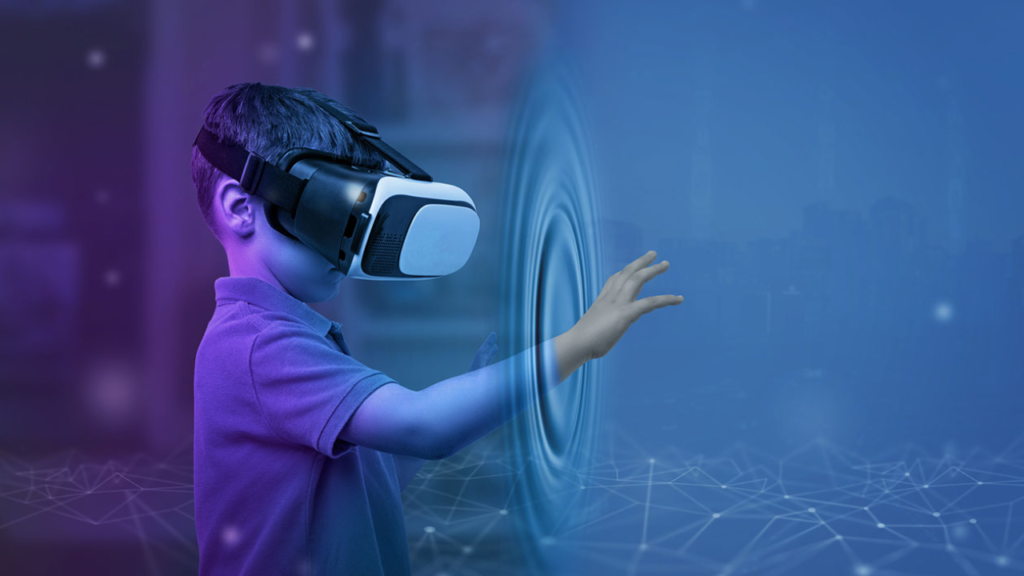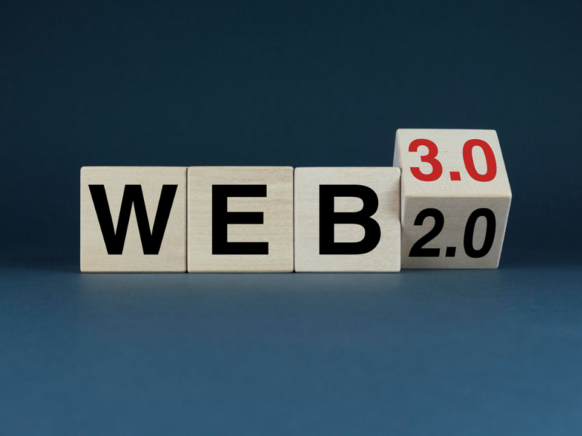Post by Tom Daccord
“Web 3.0” has been the center of much discussion this year. Advocates believe that Web 3.0 will unleash a radical and beneficial transformation of the Internet. Detractors claim that Web 3.0 is little more than a buzzword for marketing purposes. The following Q&A aims to introduce EdTechTeacher readers to Web 3.0 and outline how it may affect education.
What is Web 3.0?
Web 3.0 (or “Web3”) is an all-encompassing term for a decentralized internet. Difficult to define, Web 3.0 is essentially about eliminating the power of centralized “Big Tech” companies like Google and Facebook to manage how Internet users interact with online content. In theory, Web 3.0 users would be able to communicate and exchange information free of company or government control. If so, Web 3.0 would significantly change how we interact with each other online. Web 3.0 may not ultimately result in a radical reformulation of the Internet, but it has already generated billions in investment dollars (especially in the cryptocurrency market) and underlying technologies such as blockchain and NFTs (non-fungible tokens) are already starting to reshape the commercial landscape.
How is Web 3.0 different from Web 1.0 and Web 2.0?
Web 1.0 harks back to the early days of the Internet in the 1990s. At that time, most web pages consisted of static text and basic information, and connecting to the Internet required dialing up through a modem. Connection speeds were slow and Internet access was not ubiquitous. The ‘World Wide Web’ was little more than a collection of unorganized content on individual webpages which contained little or no interactive features.
Web 2.0 emerged in the 2000s and, unlike Web 1.0, it features user-participation and social networking. Blogs emerged as popular individual publishing spaces and wikis encouraged collaborative writing and editing. Fast internet speeds opened the door for interactive content and platforms like YouTube, Twitter, and Facebook that give users a chance to communicate and share information and content. The participatory nature of “read/write” Web 2.0 has given voice to the masses, but at the same time it has largely been driven by a handful of large corporations, such as Google and Facebook, leading to a centralization of user data and content.
Web 3.0 is largely an attempt to counter the centralization of user data and content in the hands of a relatively small number of organizations. Visions of Web 3.0 are driven by the idea of Web decentralization and incorporate new technical infrastructure that facilitates communication and information exchanges in which no company or government can control the data. In Web 3.0, Internet users would control their own data, and it would follow them to various platforms and applications.
How does Web 3.0 work?
In its early stages, Web 3.0 is being driven by new technical infrastructure that facilitates user-to-user exchanges, many of them financial. For instance, blockchain technologies allow digital information to be recorded and distributed, but not edited, so that records of commercial transactions could not be altered, deleted, or destroyed. Blockchain is attractive to buyers and sellers because digital financial transactions are secure and the possibility of fraud remote.
Furthermore, no longer will Internet users need to log into giant tech companies. Instead, Web 3.0 users retain ownership of their online activities and can track all the information they share online through a unified profile that’s stored on a blockchain. Finally, users can conduct Web 3.0 transactions without having to rely on governments, institutions, or corporations (at least in theory). Blockchains are the underlying technology for cryptocurrency systems like Bitcoin, because they provide both a secure and a decentralized record of transactions.
Web 3.0 is also characterized by the rise of non-fungible tokens (NFTs), which allow for one-of-a-kind digital collectibles (and other digital artifacts) to be bought and sold with cryptocurrencies. Non-fungible tokens are not identical to each other, therefore they represent unique “tokens” that exist on a blockchain and they cannot be replicated. They are essentially unique assets that represent real-world tangible items like artwork and real estate. (The first NFT artwork sold at an auction, “Everdays: The First 5000 Days”, went for $69 million.)
Despite these technological advancements, it is likely that Web 3.0 will exist alongside Web 2.0 for quite some time and not fully replace it. For one, it seems unlikely that Facebook, Google, and Twitter will easily relinquish their considerable stake in controlling the Internet. (Indeed, Facebook has invested billions of dollars in creating an interactive “metaverse” digital environment for Internet users.) Also, there is concern that a decentralized Internet would lead to an increase in cybercrime and false information. It is also possible that Web 3.0 technologies will not provide fully decentralized interactions that are independent of company or government government. In other words, much remains to be seen.
How will Web 3.0 impact education?

Web 3.0 is about decentralization, stripping institutions of their consolidated power and transferring that power to individuals. A decentralized Internet could weaken the power of educational institutions but provide more opportunities for students to learn.
The power to learn and impart knowledge does not belong to a single institution, but the current educational system puts the institution — school, university, etc — at the forefront of the student learning experience. The institution decides what content students should learn, how they learn it, and for how long.
Students who study in a traditional brick-and-mortar school limit their opportunities to learn in other environments and from other experts. In a decentralized learning environment, students are no longer bound by the formal constraints imposed by school or university administrators. As Web 3.0 and the metaverse develop, the Internet will increasingly enable students to access valuable resources and instructional experts and learn in fully immersive and multimedia environments that leverage both the physical and digital worlds. As such, more immersive speciality programs or “micro schools” (small learning communities) will emerge. One example is the STEM metaverse for children aged 6-14 that leverages live virtual multiplayer gaming to learn science topics. Homeschooling will also be more common as parents have an increasingly robust series of learning resources and experts from which to draw on.
Educational institutions, and universities in particular, have retained much power for their ability to offer credentials that help ensure professional and socio-economic advancement. Traditionally, a high school and university degree has been a requirement for students wishing to gain employment in many desirable occupations. However, Web 3.0 could make it easier for individuals to sign up for classes without having to rely on traditional degree programs. Students could buy access to courses without actually enrolling in an educational institution. With blockchain, students could also record their own learning accomplishments without having to rely on university-controlled transcripts.
As such, an institution would not be the sole keeper of credentials. A student would be able to create a learning portfolio on a blockchain, which could contain completed courses, educational NFTs, awards, projects, recommendations, and more. In other words, the student could display relevant learning experiences in a publicly viewable and unalterable display. Since the information could not be tampered with, it is an excellent vehicle to display completed courses and programs backed by institutional signatures.
Web 3.0 will also see the rise of educational DAOs (Decentralized Autonomous Organizations). DAOs are groups of people drawn together by a common desire to remove hierarchy from an online structure. Currently, many DAOs are business-oriented and seek ways to increase access to information, eliminate bureaucracy, and reduce the costs of existing institutions. That said, “learning DAOs” are starting to emerge, dedicated to educating members of a group on a particular topic.
It’s likely that there will be specific learning DAOs focused on improving online educational systems. It’s not a stretch to envision “EdDAOs” that offer online classes and courses, if not outright specialty programs. During the height of COVID-19, “learning pods” became an alternative method of educating students because clusters of parents came together to address shortcomings in the educational system. It’s too early to tell whether dissatisfaction with schools might lead certain EdDOAs to create alternative learning environments for students, but it is a distinct possibility.
More radical visions of Web 3.0 include schools acting like businesses, selling cryptocurrency and NFTs to raise money. But schools are entrenched, conservative institutions and any changes will be slow and wrought with difficulty. To date, school administrators and teachers have been wary of decentralized online learning environments where they might not be able to supervise student activity. They have been much inclined to opt for online “walled gardens” — such as Google for Education — that provide a suite of online tools accessed through easily-monitored school accounts.
Web 3.0 will bring changes to education over time, but schools and universities will resist them — especially student independence in blockchains. So, it will be interesting to see how educational institutions react to powerful forces changing how we interact online.


